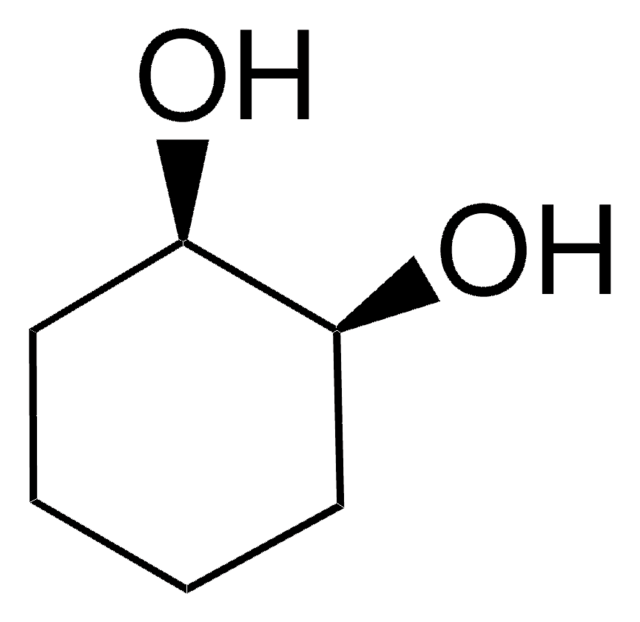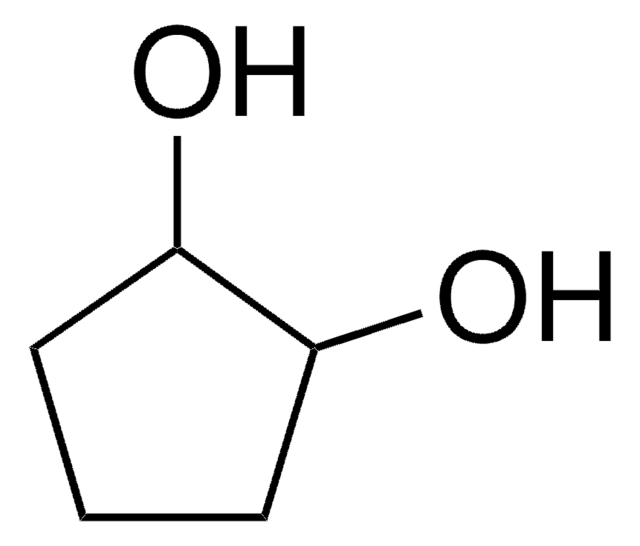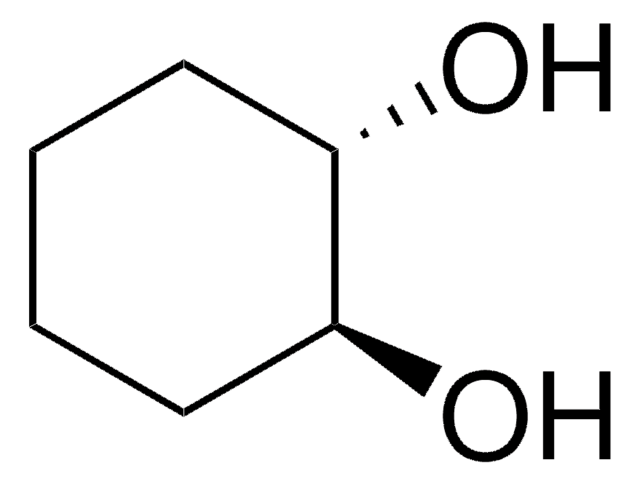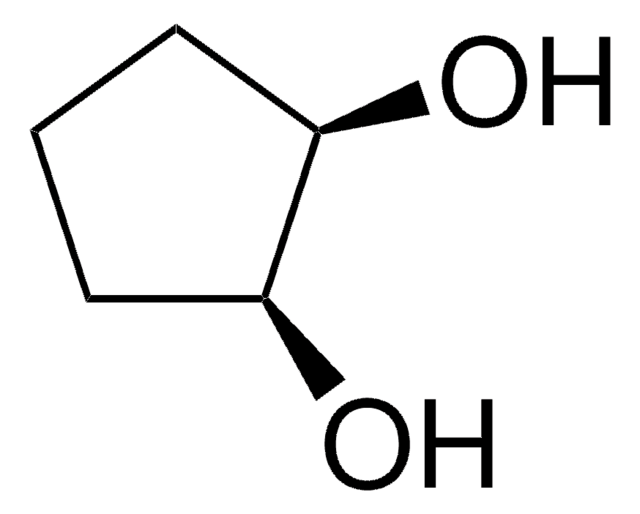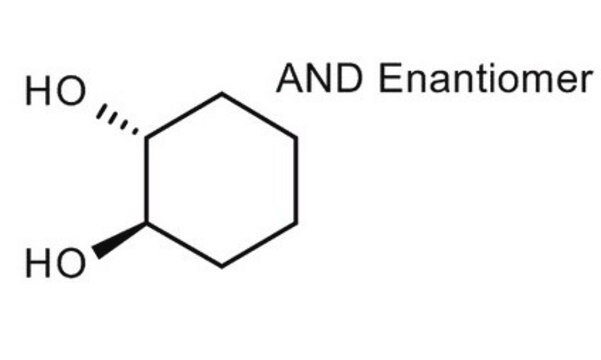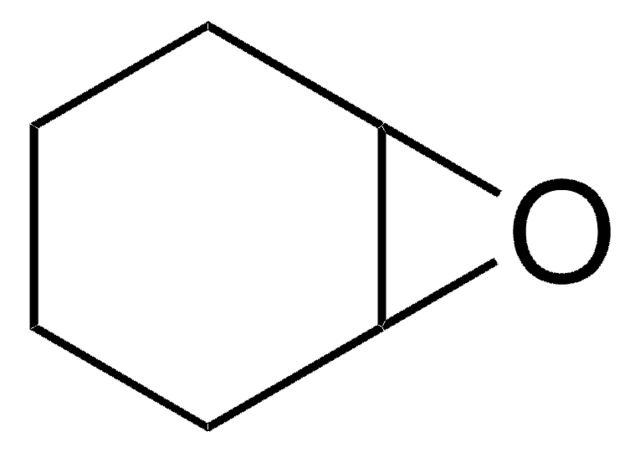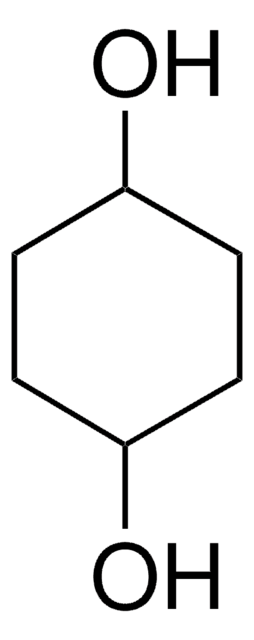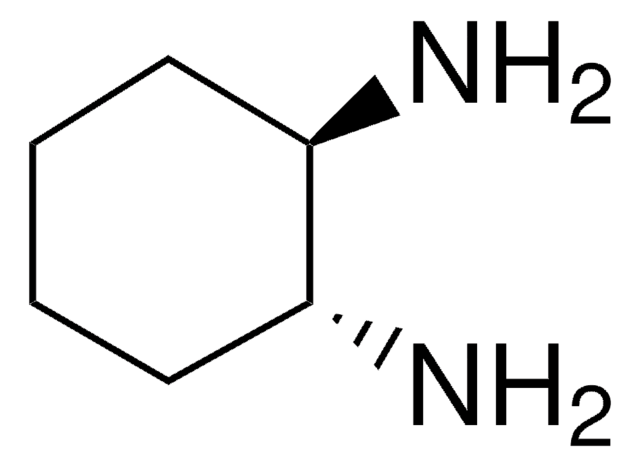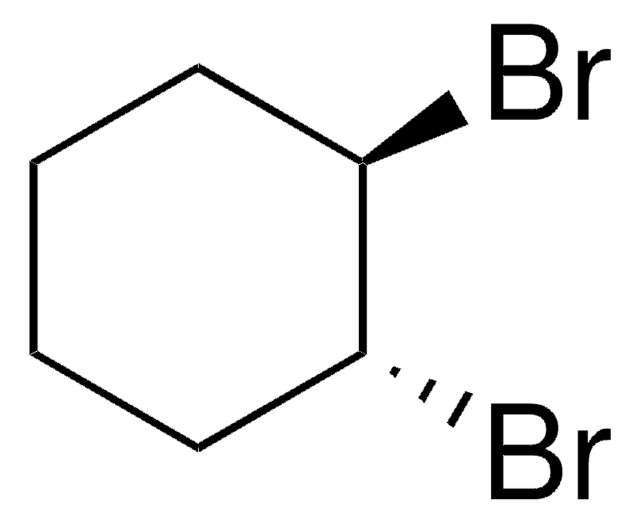141712
trans-1,2-Cyclohexanediol
98%
Sinónimos:
1,2-trans -Cyclohexanediol, 1,2-trans -Dihydroxycyclohexane, trans -2-Hydroxycyclohexanol
Iniciar sesiónpara Ver la Fijación de precios por contrato y de la organización
About This Item
Fórmula lineal:
C6H10(OH)2
Número de CAS:
Peso molecular:
116.16
Beilstein/REAXYS Number:
3193810
EC Number:
MDL number:
UNSPSC Code:
12162002
PubChem Substance ID:
NACRES:
NA.23
Productos recomendados
Quality Level
assay
98%
form
solid
mp
101-104 °C (lit.)
SMILES string
O[C@@H]1CCCC[C@H]1O
InChI
1S/C6H12O2/c7-5-3-1-2-4-6(5)8/h5-8H,1-4H2/t5-,6-/m1/s1
InChI key
PFURGBBHAOXLIO-PHDIDXHHSA-N
Storage Class
11 - Combustible Solids
wgk_germany
WGK 3
flash_point_f
Not applicable
flash_point_c
Not applicable
ppe
Eyeshields, Gloves, type N95 (US)
Elija entre una de las versiones más recientes:
¿Ya tiene este producto?
Encuentre la documentación para los productos que ha comprado recientemente en la Biblioteca de documentos.
Los clientes también vieron
Lisa D Cervia et al.
Molecular therapy. Nucleic acids, 11, 263-271 (2018-06-03)
The nuclear envelope is a physiological barrier to electrogene transfer. To understand different mechanisms of the nuclear entry for electrotransfected plasmid DNA (pDNA), the current study investigated how manipulation of the mechanisms could affect electrotransfection efficiency (eTE), transgene expression level
Sigthor Petursson
Carbohydrate research, 338(9), 963-968 (2003-04-12)
The paper reports the tin(II) chloride catalyzed reactions of diazodiphenylmethane with the cis- and trans-1,2-cyclohexanediols and R,S-1,2-propanediol in 1,2-dimethoxyethane and the identification of the monodiphenylmethyl ethers formed. The catalyst is shown to work for both the cis- and trans-cyclohexanediols, but
T Kiguchi et al.
Chemical & pharmaceutical bulletin, 48(10), 1536-1540 (2000-10-25)
Asymmetric spirocyclization based on intramolecular conjugate addition using a combination of a Lewis acid and an optically active cyclohexane-1,2-diol has been studied in connection with 1) the effect of substituents on the cyclohexane-1,2-diol and 2) the effect of substituents on
Ivan Liashkovich et al.
Journal of controlled release : official journal of the Controlled Release Society, 160(3), 601-608 (2012-03-06)
The efficiency of gene therapy in non-dividing cells is particularly poor due to restricted nuclear delivery rates of exogenously applied macromolecules across the nuclear pore complexes (NPCs). Therefore, improved intranuclear delivery of transgenes requires an ability to modulate the barrier
Ine Lentacker et al.
Journal of controlled release : official journal of the Controlled Release Society, 132(3), 279-288 (2008-07-29)
After administration to the body, nucleic acid containing nanoparticles (NANs) need to cross several extra- and intracellular barriers to reach the cytoplasm or nucleus of the target cells. In the last decade several groups tried to overcome these barriers by
Chromatograms
suitable for GCNuestro equipo de científicos tiene experiencia en todas las áreas de investigación: Ciencias de la vida, Ciencia de los materiales, Síntesis química, Cromatografía, Analítica y muchas otras.
Póngase en contacto con el Servicio técnico